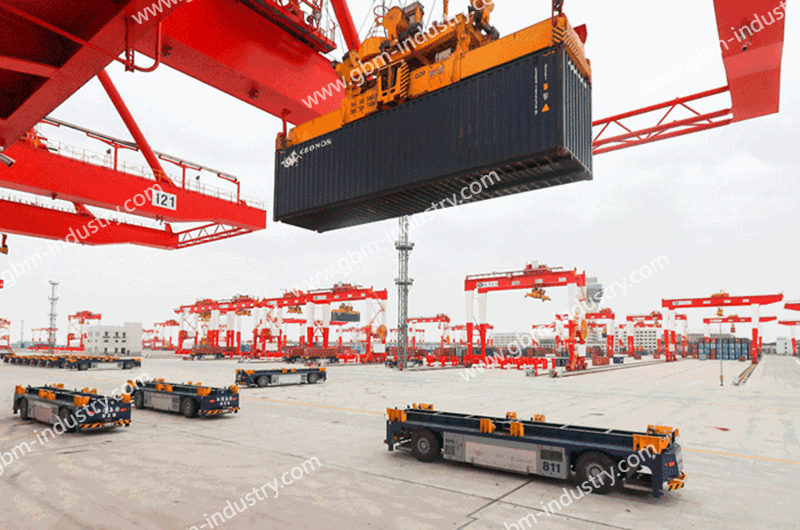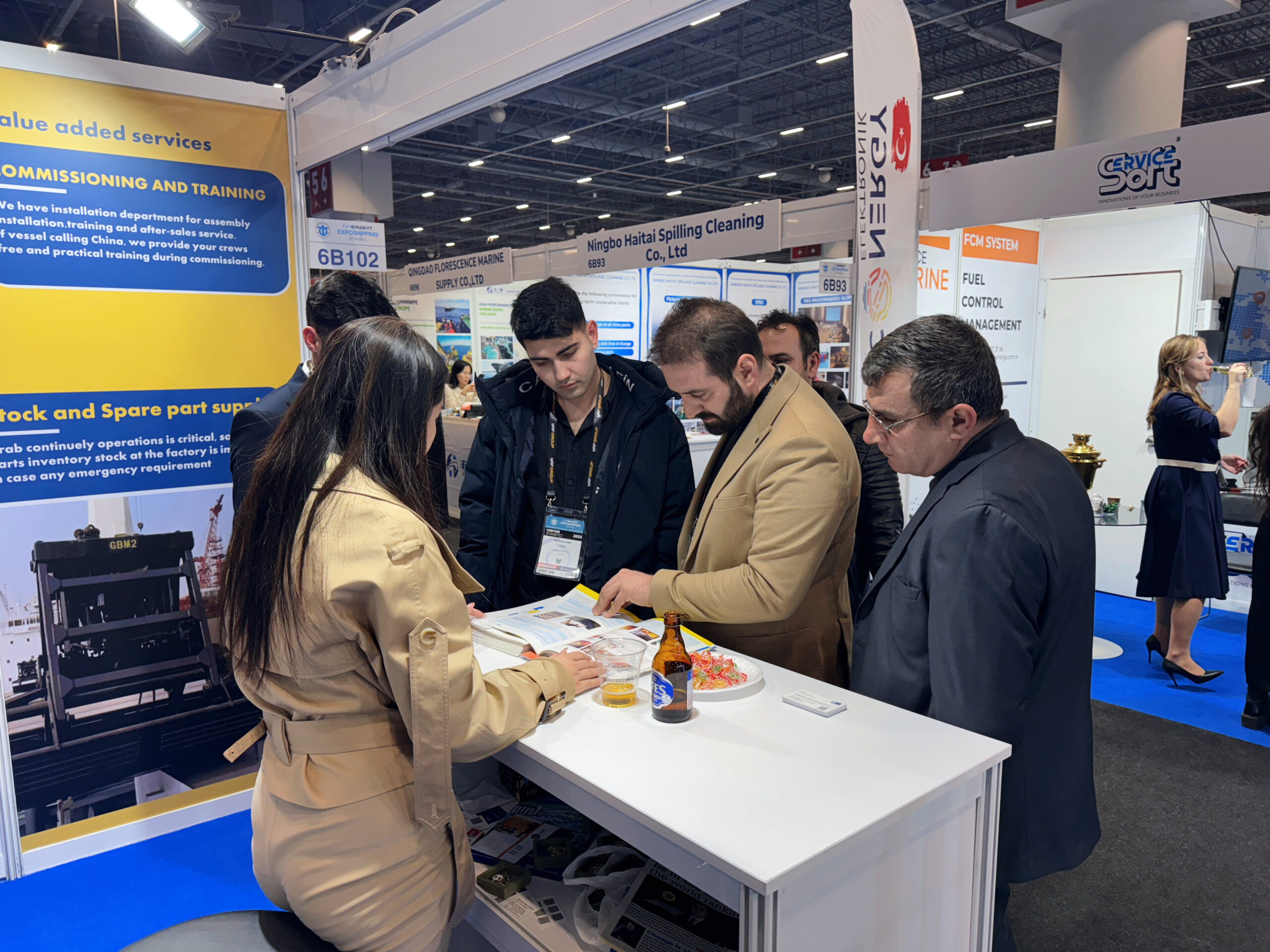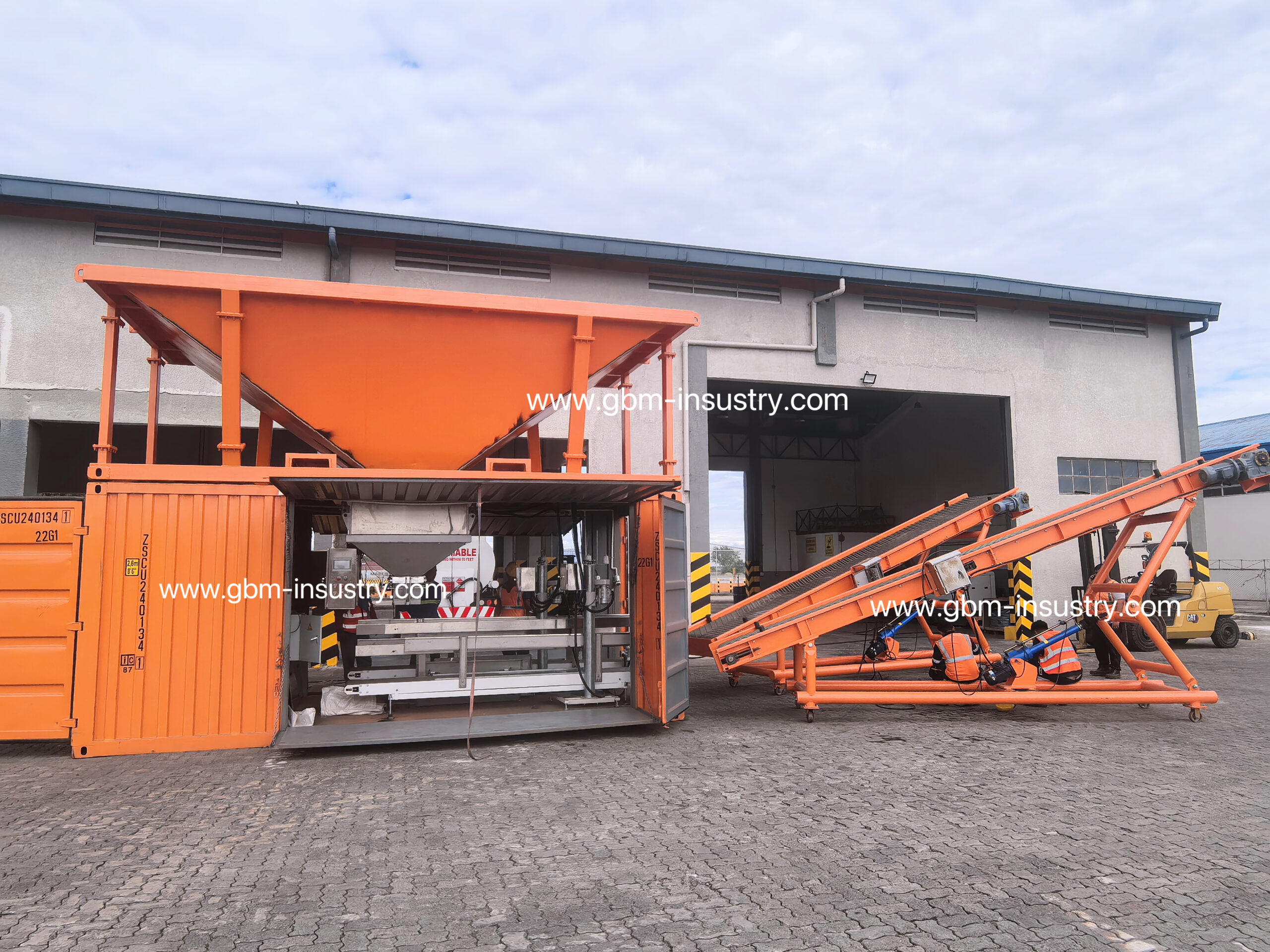Background Introduction
The world’s first automated container terminal commenced operations in the Netherlands in 1993, ushering in the era of automated container terminal construction. However, prior to 2013, automated terminal development was primarily concentrated in regions such as Europe and North America. It wasn’t until 2014 that Xiamen Yuhai Terminal began converting to an automated terminal and commenced trial operations, pioneering automated container terminal construction in China.
Domestic automated container terminal development then accelerated rapidly, with Qingdao Port’s automated container terminal coming online in 2017 and Shanghai International Port Group’s Yangshan Phase IV automated container terminal following suit in 2018. Since then, coastal automated container terminal construction and retrofitting projects for traditional terminals have proliferated across China, establishing the nation as a global leader in automated container terminal development.
Terminal handling efficiency is primarily measured by gantry crane performance, though the associated horizontal transport equipment also significantly impacts throughput. Currently, gantry cranes at automated terminals are primarily categorized into two types: single-girder gantry cranes and double-girder gantry cranes. The corresponding horizontal transport equipment mainly includes AGVs and straddle carriers (unmanned container trucks and IGVs are both classified under AGVs). There are currently three primary configurations for the coordinated use of these devices: single-girder gantry cranes with AGVs, single-girder gantry cranes with straddle carriers, and double-girder gantry cranes with AGVs.
This paper primarily investigates the operational efficiency of automated terminal gantry cranes through these three modes. Other factors such as TOS command dispatch, horizontal transport equipment path planning, and parking accuracy are assumed to be idealized and excluded as influencing variables. Given the complex and uncontrollable nature of gantry crane loading/unloading operations, extensive data accumulation is required. The analysis focuses on identifying critical points in the process, collecting actual operational data, and conducting simulation modeling.
Automated Equipment Coordination Modes
In the single-gantry crane and straddle carrier (SC) interaction workflow, the ship-to-ground processes—including container grabbing, lock removal, and placement at ground-level bays—are time-consuming and critical efficiency factors during unloading. For loading, ground-level container grabbing, lock installation, and ship-to-ground placement are key efficiency drivers, collectively contributing to prolonged cycle times. Simulation calculations derive the theoretical maximum efficiency table for single-gantry crane and SC container handling coordination.
In the single-gantry crane and AGV interaction workflow, the time required for onboard container pickup, lock removal, and placement onto the AGV during unloading is the key efficiency factor. During loading, the time for AGV container pickup, lock installation, and onboard placement are the critical efficiency factors, contributing to the prolonged cycle time.
Analysis of the dual-trolley and AGV interaction workflow reveals that during unloading, the unlatching process and container transfer to the AGV are both performed by the gantry trolley, thus not occupying the main trolley’s cycle time. Consequently, container pickup on the ship and platform placement become the key factors affecting the main trolley’s efficiency. During the loading process, the lock installation and container pickup from AGVs are performed by gantry cranes, not occupying the main crane’s cycle time. The main crane’s platform container pickup and ship-side container placement are the critical factors affecting efficiency.
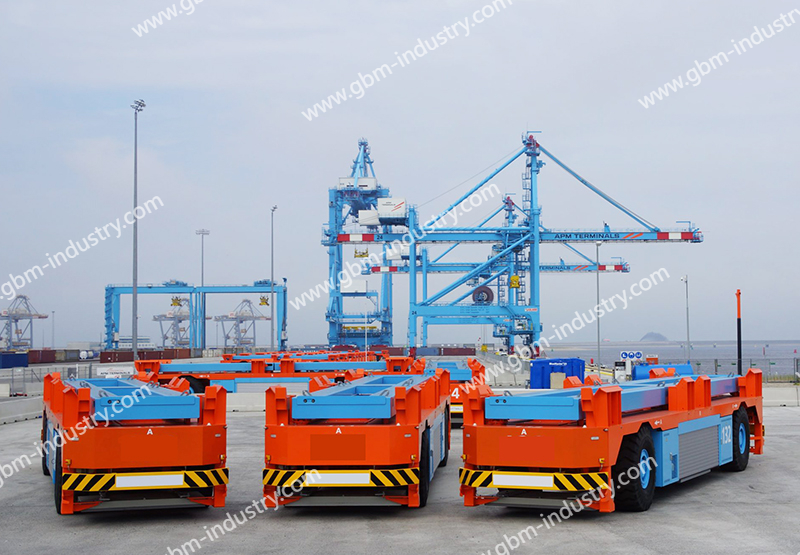
Reasons for Higher Efficiency of Double-Gantry Cranes
Among the three modes, the time allocated for ship-side container pickup is identical. The primary differences lie in the unlatching process and interactions with horizontal transport equipment. Calculations comparing the theoretical maximum efficiency of ship unloading reveal that double-gantry cranes inherently possess higher loading/unloading efficiency due to two key factors:
First, the travel distance for both the main and lifting trolleys is shorter due to the intermediate platform. Containers unloaded from the vessel are placed onto this platform, allowing the gantry trolley to pick them up and transfer them to the AGV without occupying the main trolley’s cycle time. Since the gantry trolley’s cycle time is shorter than the main trolley’s, the gantry trolley typically waits for the main trolley under normal conditions.
Now consider the single-trolley gantry crane’s process from retrieving containers from the vessel and unlocking them to interacting with the AGV. It lowers containers from a height of nearly 50 meters, with positioning accuracy required within ±30mm. Even with mature electronic anti-sway technology, this process impacts container handling efficiency. Extended container placement times prolong overall cycle times, and high winds further increase placement duration, severely impacting gantry crane productivity and potentially affecting the entire terminal’s efficiency. When a single-gantry crane interacts with a straddle carrier, containers can be dropped directly onto the ground but must land within a designated area, which also requires precision and suffers from extended cycle times.
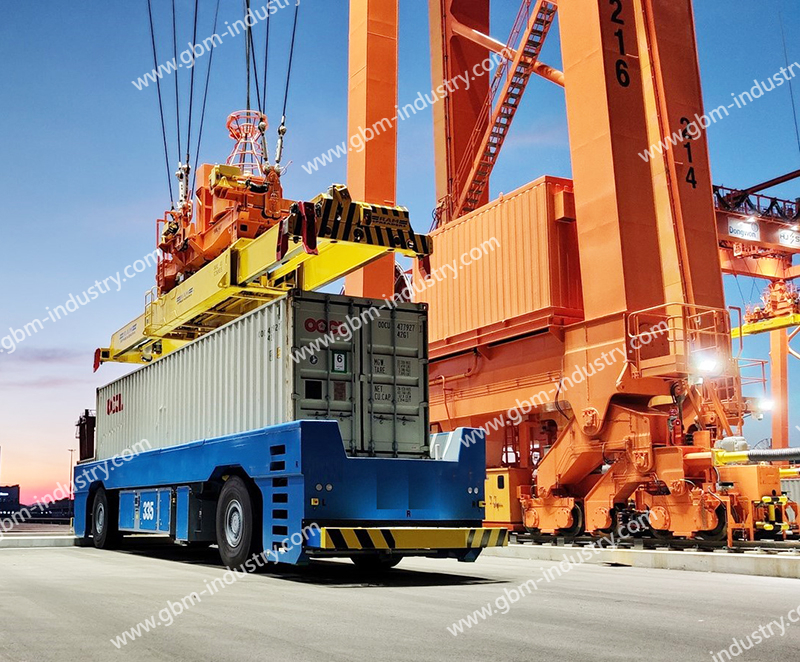
Second, the lock disengagement/engagement process for double-girder cranes occurs after the main girder places the container on the platform and before the luffing girder retrieves it. This sequence saves nearly 25% of the total cycle time compared to single-girder cranes. Some terminals address this by implementing centralized lock stations, though their placement within automated zones remains a challenge.
Based on the above theoretical analysis, the optimal combination for enhancing operational efficiency in automated terminals is the integration of double-girder gantry cranes with AGVs.
Smart Ports with Premium Spare Parts Solutions
At the heart of modern global logistics hubs—automated container terminals—dual-girder gantry cranes play a pivotal role with their exceptional efficiency. Together with ground AGVs (Automated Guided Vehicles), they form a precisely coordinated, seamlessly integrated intelligent loading/unloading system. Their operational efficiency directly determines a port’s throughput capacity and competitiveness.
Within this highly intelligent workflow, a stable, precise, and reliable electrical control system serves as the “nerve center” ensuring seamless operation. GBM understands this principle deeply. We specialize in providing a full range of high-quality spare parts and professional technical services for advanced double-girder gantry cranes, particularly for core electrical control systems, various sensors, and precision components. We are fully committed to ensuring the stable and efficient 24/7 operation of port equipment.
Our product and service advantages stem from an uncompromising commitment to quality:
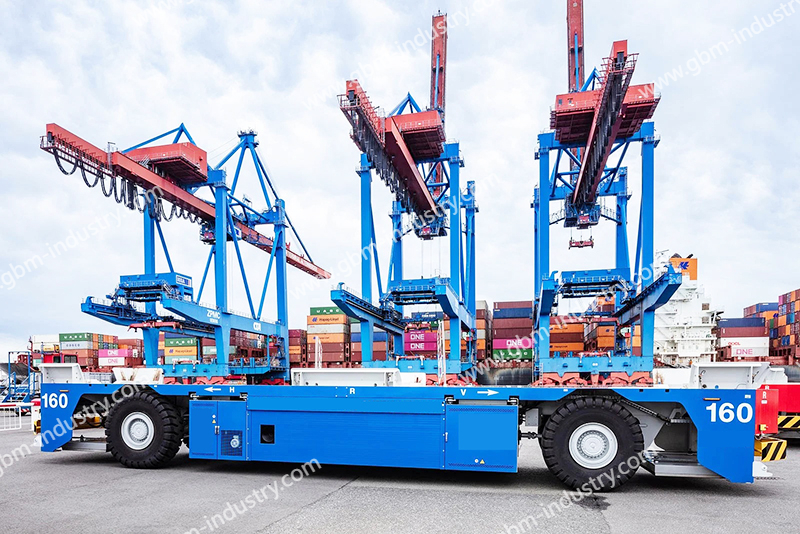
4.1 Premium Imported Brands for Exceptional Performance: We recognize reliability as the cornerstone of efficient operations. Therefore, GBM rigorously selects electrical components and sensors from globally renowned brands, including but not limited to genuine products from Siemens, Schneider Electric, ABB, and other top international manufacturers. These components are renowned for their ultra-high precision, exceptional interference resistance, and outstanding stability. They perfectly meet the complex requirements of double-girder gantry cranes for variable frequency drives, precise positioning, and intelligent communication. This not only significantly enhances control efficiency and smoothness in operations like lifting and trolley travel but also greatly extends equipment lifespan. It fundamentally reduces unplanned downtime caused by component failures, delivering long-term comprehensive benefits.
4.2 Ample Inventory, Lightning-Fast Response: Time equals efficiency; downtime equals cost. Recognizing the urgency of continuous port operations, GBM has established a specialized, large-scale spare parts warehouse maintaining ample stock of common and critical electrical components for double-girder gantry cranes. We guarantee a 24-hour rapid response mechanism. Day or night, our expert team springs into action whenever you need us, ensuring required parts arrive on-site promptly. This minimizes equipment downtime, securing valuable advantages for your production schedule.
4.3 Expert Technical Support, Service That Exceeds Expectations: GBM delivers far more than just products. Our team of seasoned technical engineers delivers comprehensive guidance—from spare part selection and installation to equipment maintenance. Whether diagnosing complex PLC program faults, optimizing inverter parameters, performing precise sensor calibration, or adjusting wire rope winding systems, our experts provide timely, professional remote or on-site support. This ensures every spare part operates at peak performance, helping you maximize equipment utilization and operational safety.
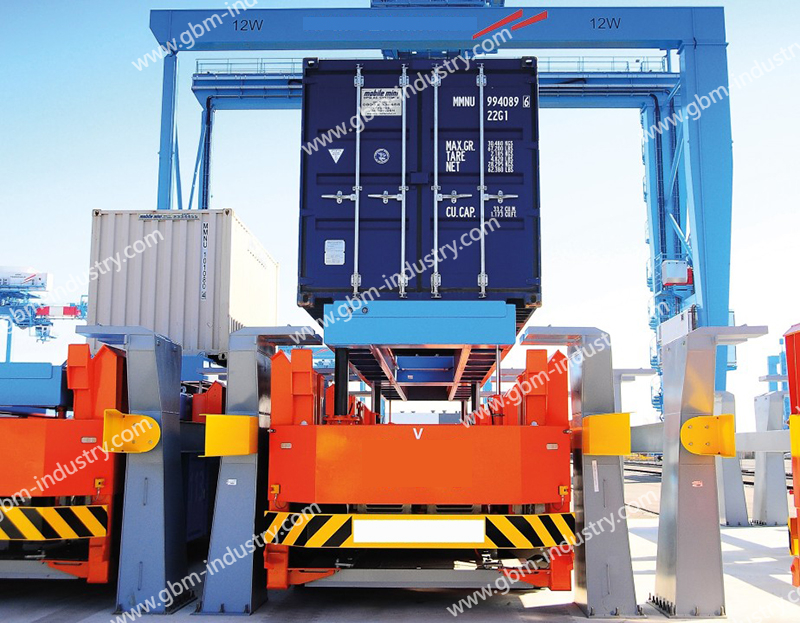
Choosing GBM means choosing a trusted long-term partner. With high-quality spare parts as our foundation, rapid response as our guarantee, and professional technical services as our backbone, we are fully committed to safeguarding the stable, efficient, and intelligent operation of your double-girder gantry cranes, jointly driving the vigorous development of smart port initiatives.
Conclusion
In large automated terminals, the coordination between automated gantry cranes and automated horizontal transport equipment is a critical factor influencing overall terminal operational efficiency. This paper analyzes the selection of coordinated equipment for automated terminal gantry cranes and automated horizontal transport systems using extensive data, providing comprehensive analysis and evaluation of key points. It offers theoretical reference for the construction or retrofitting of container terminals.



